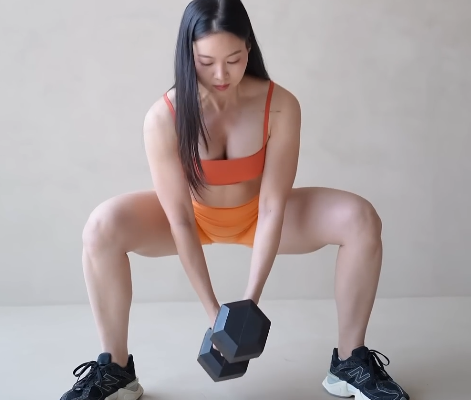Squats are among the most effective exercises for building lower-body strength, improving mobility, and enhancing overall fitness. Two popular variations, the Goblet Squat and Sumo Squat, are widely used in fitness routines to target the legs and glutes. While they may appear similar, these two exercises have significant differences in muscle engagement, form, benefits, and best use cases. Understanding these differences can help you optimize your workout routine and achieve better results.
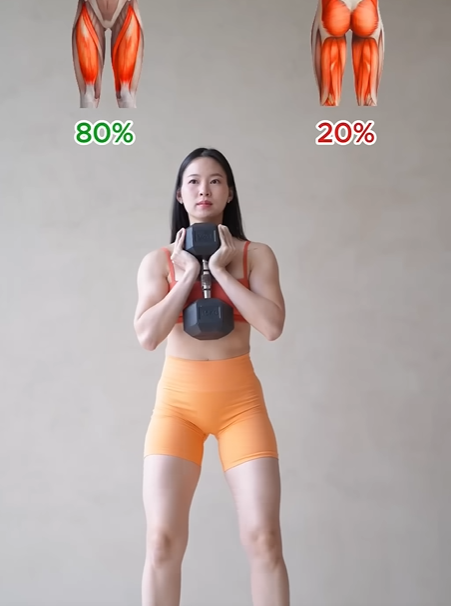
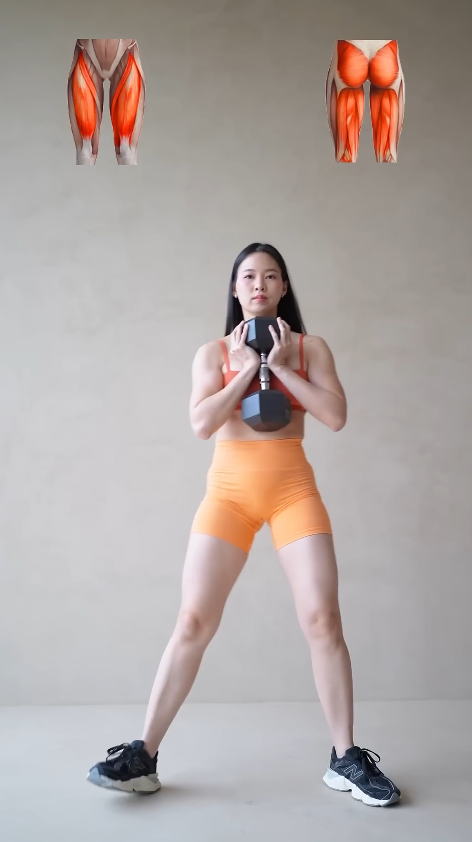
1. The Basics of Each Squat
Goblet Squat: A Full-Body Powerhouse
The Goblet Squat is a front-loaded squat variation where you hold a dumbbell or kettlebell close to your chest. It is a fantastic beginner-friendly movement that promotes proper squat mechanics and improves core stability.
How to Perform a Goblet Squat:
- Hold a dumbbell or kettlebell at chest level with both hands, keeping your elbows tucked in.
- Stand with your feet about shoulder-width apart.
- Keep your chest up and engage your core.
- Lower yourself by bending your knees and pushing your hips back, ensuring your thighs are parallel to the ground (or lower if mobility allows).
- Press through your heels to return to the starting position.
Muscles Targeted:
- Quadriceps
- Glutes
- Hamstrings
- Core
- Upper Back (due to the weight placement)
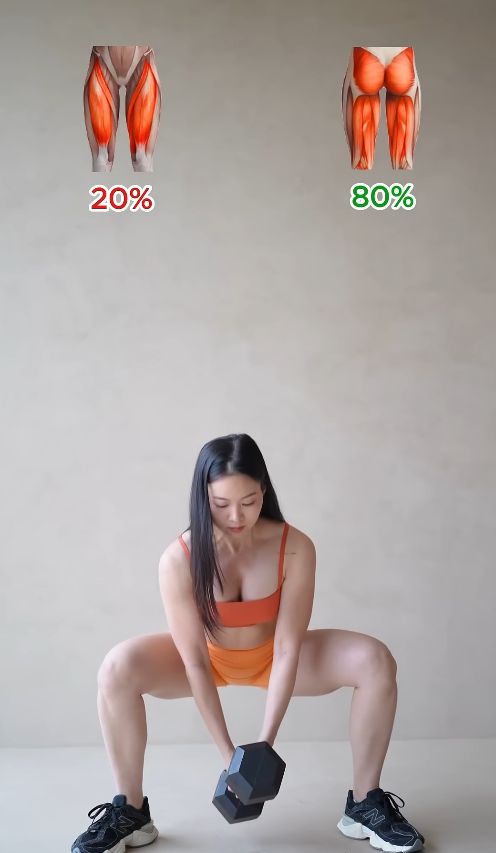
Sumo Squat: A Glute-Focused Alternative
The Sumo Squat is a variation with a wider stance and toes pointing outward, emphasizing the inner thighs and glutes. It is an excellent movement for those looking to target the adductors (inner thigh muscles) along with the usual squat muscles.
How to Perform a Sumo Squat:
- Stand with your feet wider than shoulder-width apart and toes pointing outward at about a 45-degree angle.
- Hold a dumbbell or kettlebell with both hands in front of you (optional but recommended for resistance).
- Engage your core and keep your chest upright.
- Lower your body by bending your knees and pushing your hips down, ensuring your thighs are parallel to the floor.
- Drive through your heels and squeeze your glutes as you return to the starting position.
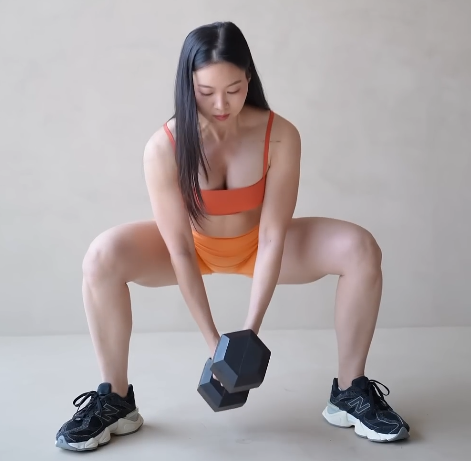
Muscles Targeted:
- Glutes (especially glute medius and maximus)
- Inner Thighs (Adductors)
- Quadriceps
- Hamstrings
- Core
2. Key Differences Between the Goblet Squat and Sumo Squat
| Feature | Goblet Squat 🦵 | Sumo Squat 🍑 |
|---|---|---|
| Stance | Shoulder-width | Wider than shoulder-width |
| Foot Position | Toes slightly outward | Toes pointing outward (45 degrees or more) |
| Weight Position | Held at chest level | Held between legs (optional) |
| Primary Focus | Quads, Core, Upper Back | Glutes, Inner Thighs |
| Best For | Learning squat mechanics, Core stability | Targeting glutes, Strengthening adductors |
3. Benefits of Each Squat Variation
✅ Goblet Squat Benefits:
✔ Great for Beginners: The front-loaded weight encourages proper form and prevents excessive forward lean. ✔ Improves Core Strength: Holding the weight at chest level requires core engagement throughout the movement. ✔ Enhances Mobility: Helps improve hip and ankle mobility due to its deep squat mechanics. ✔ Reduces Lower Back Strain: Compared to back squats, the goblet squat places less stress on the lower back. ✔ Versatile & Safe: Can be performed with kettlebells, dumbbells, or even a weight plate.
✅ Sumo Squat Benefits:
✔ Better Glute Activation: The wider stance and outward foot position engage the glutes more effectively. ✔ Strengthens Inner Thighs: One of the best squat variations for targeting the adductor muscles. ✔ Great for Hip Flexibility: Helps improve mobility in the hips due to the deeper squat position. ✔ Less Knee Stress: The wider stance can be more comfortable for people with knee pain or limited ankle mobility. ✔ Improves Lower Body Strength: Works similar muscles as the traditional squat but with a different emphasis.
4. Which Squat Should You Choose?
Choose the Goblet Squat if:
✅ You’re a beginner learning proper squat form. ✅ You want to strengthen your quads, core, and upper back. ✅ You’re looking for a squat variation that enhances posture and balance. ✅ You prefer a movement that reduces lower back strain.
Choose the Sumo Squat if:
✅ You want to emphasize glutes and inner thighs. ✅ You’re looking to improve hip mobility. ✅ You experience knee pain in a traditional squat stance. ✅ You want a squat variation that engages the lower body differently.
5. Can You Do Both in Your Routine?
Absolutely! Both squats serve different purposes and can complement each other in a well-rounded lower-body workout. For example:
- Goblet Squat can be included on days where you focus on overall leg strength and core stability.
- Sumo Squat can be added on glute-focused days or when targeting inner thigh muscles.
Example Lower-Body Routine:
1️⃣ Goblet Squat – 3 sets of 12 reps (Quad & Core Focus) 2️⃣ Sumo Squat – 3 sets of 10 reps (Glute & Inner Thigh Focus) 3️⃣ Romanian Deadlifts – 3 sets of 10 reps (Hamstrings & Glutes) 4️⃣ Lunges – 3 sets of 10 reps per leg (Functional Strength) 5️⃣ Calf Raises – 3 sets of 15 reps (Ankle & Foot Strength)
Final Thoughts
Both the Goblet Squat and Sumo Squat are fantastic lower-body exercises with unique benefits. While the goblet squat is excellent for building overall strength and improving squat mechanics, the sumo squat excels at targeting the glutes and inner thighs. Incorporating both into your workout routine can help you develop balanced strength and avoid muscle imbalances.
Next time you hit the gym, try incorporating both variations and feel the difference in muscle activation! Whether you’re a beginner or an experienced lifter, understanding these squat variations can elevate your fitness journey.
🏋️♂️ Which one do you prefer? Let us know in the comments!
